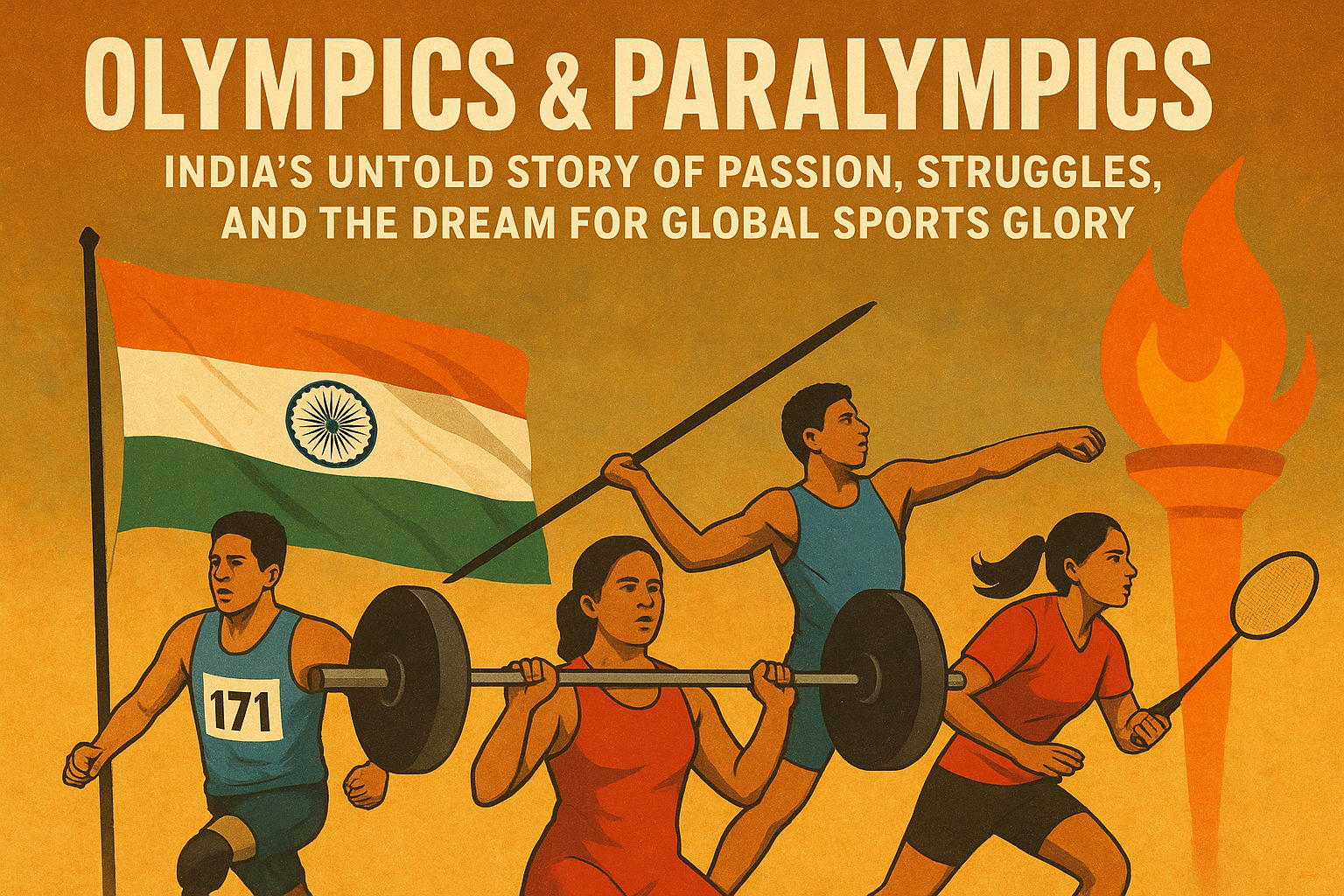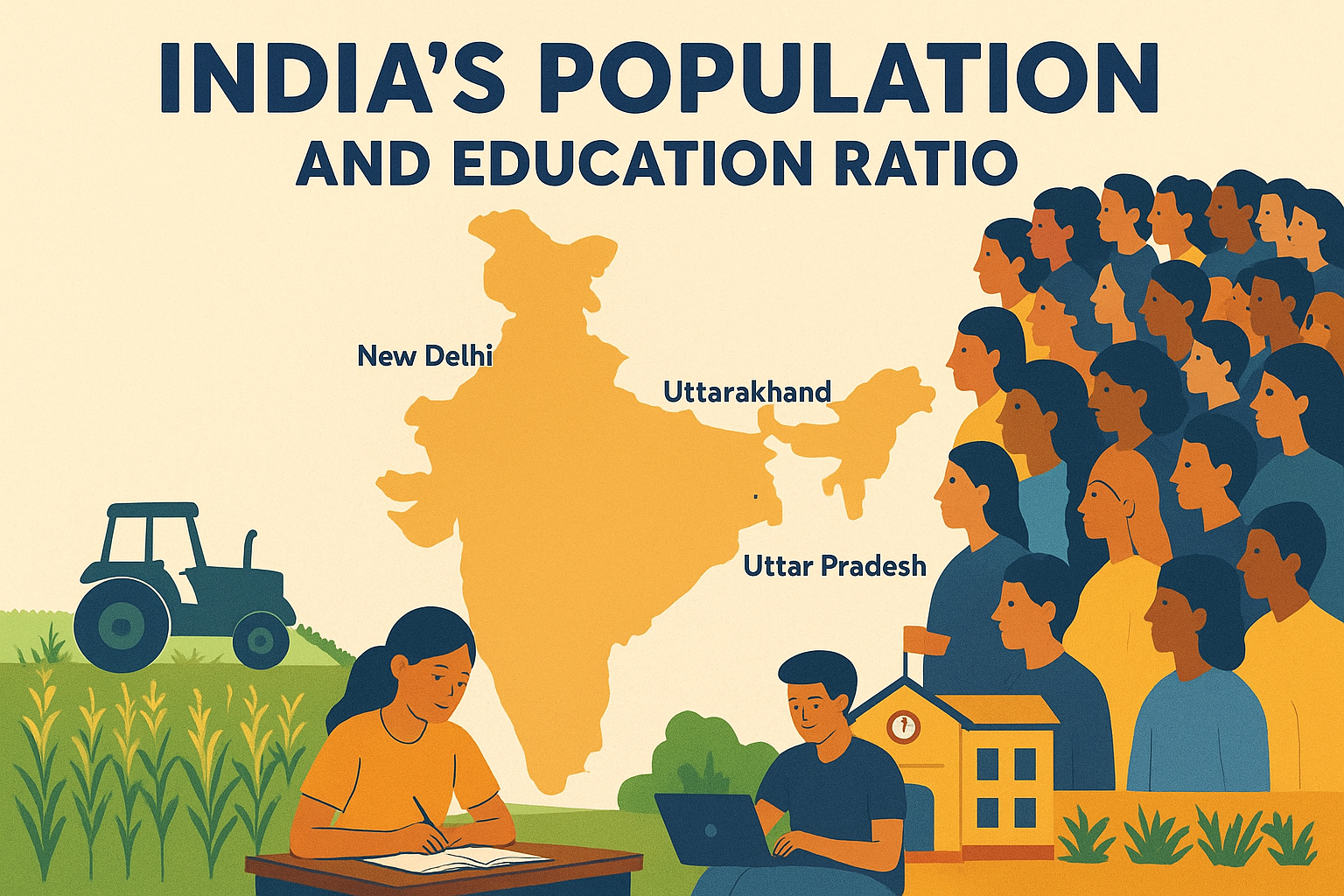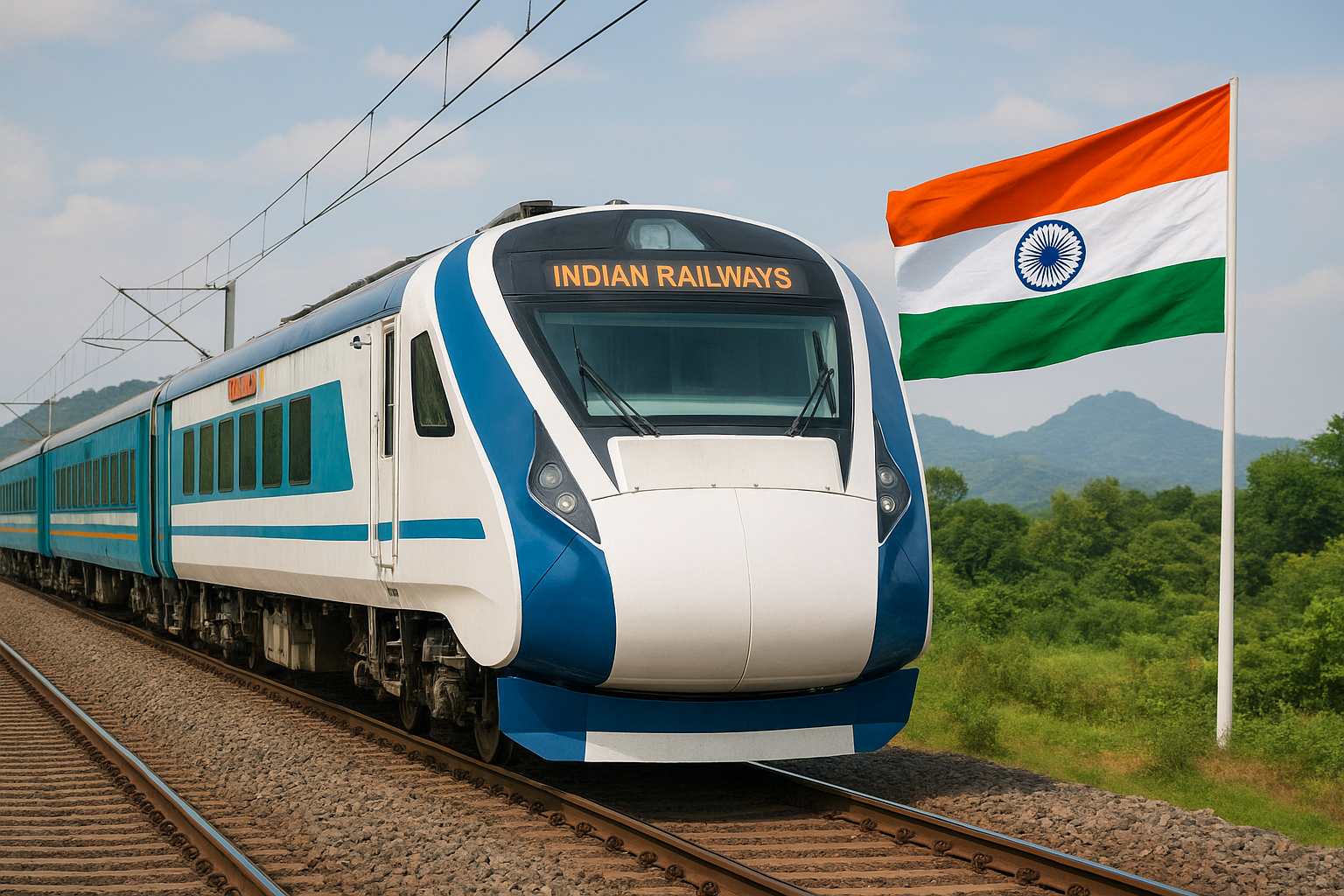Olympics and Paralympics – The Global Celebration of Sports
The Olympic and Paralympic Games are two of the most prestigious sporting events in the world. They symbolize the spirit of unity, determination, and human excellence. Athletes from every corner of the globe gather not only to compete but also to promote peace, friendship, and mutual respect among nations. The Olympics is more than just a competition; it is a festival of humanity, celebrating the power of sports to bring people together.
What are the Olympics?
The Olympic Games are an international multi-sport event organized every four years, featuring summer and winter sports competitions. The modern Olympics began in 1896 in Athens, Greece, inspired by the ancient Olympic Games that were held in Olympia nearly 3,000 years ago. The Games are governed by the International Olympic Committee (IOC) and host thousands of athletes representing more than 200 nations.
What are the Paralympics?
The Paralympic Games are an international sports competition for athletes with physical, visual, and intellectual impairments. They are organized shortly after the Olympics in the same host city and follow similar traditions such as the opening and closing ceremonies, the lighting of the flame, and the awarding of medals. The Paralympics began in 1960 in Rome and have since grown into a powerful platform showcasing courage, resilience, and ability beyond disability.
The Ideals Behind the Games
The core philosophy of both the Olympics and Paralympics revolves around the belief that sports can build a better and more peaceful world. The Olympic motto, “Citius, Altius, Fortius” (Faster, Higher, Stronger), and the Paralympic motto, “Spirit in Motion”, together represent the human drive to overcome limits and continuously strive for excellence.
Structure and Global Reach
The Olympic Games consist of two main events — the Summer Olympics and the Winter Olympics. The Summer Olympics feature sports like athletics, swimming, gymnastics, and football, while the Winter Olympics include skiing, ice hockey, and snowboarding. The Paralympics similarly feature both summer and winter editions, with sports designed to accommodate different abilities — such as wheelchair basketball, para-swimming, and goalball for visually impaired athletes.
The Significance of Hosting the Olympics
Hosting the Olympic Games is considered a matter of great national pride. It boosts tourism, creates global visibility, and can transform a city’s infrastructure. However, it also comes with challenges such as financial burden and sustainability issues. Countries like Japan (Tokyo 2020), France (Paris 2024), and the USA (Los Angeles 2028) have invested billions of dollars to organize this mega event successfully.
Connection Between Olympics and Paralympics
While both events share similar goals and values, the Paralympics focus on inclusion and equality in sports. Today, both Games are considered essential to the global sports calendar, promoting not just athletic excellence but also diversity, respect, and inspiration. Every Paralympic athlete represents a story of resilience — a reminder that disability is not inability.
India and the Olympics – The Unfulfilled Potential
India, a nation of over 1.4 billion people, has an enormous talent pool. Yet, when it comes to the Olympic Games, our achievements have been limited compared to our potential. Despite being one of the most populous countries in the world, India’s medal count in the Olympics and Paralympics remains relatively low. The reasons behind this are complex, involving historical, social, and institutional factors.
Why Indians Are Not Participating Actively in the Olympics
One of the major reasons for India’s limited representation is the lack of a structured and widespread sports culture. In most schools and colleges, academic success is prioritized over sports. Students are encouraged to become doctors, engineers, or government officers, while sports are seen as an extra activity rather than a career path. As a result, many talented athletes abandon their dreams due to family pressure and societal expectations.
Lack of Awareness and Exposure
A significant section of Indian youth is unaware of how the Olympics or Paralympics actually work. They do not know the process of qualification, training, or the kind of support required. In smaller towns and villages, children rarely get exposure to national or international sports events. There is a gap between talent and opportunity — while rural India has immense raw potential, it remains untapped due to the absence of proper identification and guidance.
Lack of Infrastructure and Facilities
India’s sports infrastructure is far below international standards. In most schools, playgrounds are either too small or not maintained. Professional sports academies are limited to metro cities and are often expensive, making them inaccessible for common students. While cricket stadiums are built and maintained regularly, sports like athletics, gymnastics, swimming, or wrestling lack proper facilities and funding.
Absence of Motivation and Support
Young athletes in India often face a lack of motivation due to limited recognition and uncertain futures. Even after achieving success at national levels, many athletes struggle financially. There are limited sponsorships, fewer job opportunities, and minimal media coverage for non-cricket sports. Without encouragement, it becomes difficult for them to sustain their passion.
Sports and Education – A Missing Connection
In developed nations, sports and academics go hand in hand. Students receive scholarships for sports achievements, and their education systems support physical development equally. In India, however, sports are rarely integrated into the school curriculum. Physical Education (P.E.) is treated as a non-serious subject. This disconnection prevents children from understanding the value of fitness, discipline, and teamwork — qualities that sports naturally instill.
Why Indians Do Not See a Career in Sports
For most Indian families, the word "career" is still associated with traditional professions. Sports, especially Olympic-level disciplines like archery, boxing, swimming, or athletics, are seen as risky choices because they lack guaranteed income or stability. Even when athletes perform well, financial insecurity and lack of long-term support discourage them. Only a handful of sports — mainly cricket — have managed to break this barrier.
The Urban-Rural Divide in Sports Opportunities
While metro cities have better access to coaches and stadiums, rural areas depend on outdated facilities or open fields. Ironically, many of India’s best athletes have come from rural backgrounds — proof that raw talent exists everywhere. What’s missing is an ecosystem that nurtures and guides them toward international platforms like the Olympics and Paralympics.
Government Efforts and Their Limitations
Although the Indian government has launched initiatives such as “Khelo India” and the Sports Authority of India (SAI) training programs, these efforts have yet to reach the grassroots effectively. Corruption, delayed funding, and lack of follow-up often weaken these schemes. To truly uplift Indian sports, we need transparent systems, local sports clubs, trained coaches, and early talent identification mechanisms.
Awareness, Media, and India’s Cricket Obsession
Awareness plays a vital role in shaping how a nation views sports. In India, unfortunately, awareness about the Olympics and Paralympics remains limited to a small audience. Most people only pay attention during the event season, and once it ends, interest fades away. This lack of consistent exposure and recognition affects not only the athletes but the entire sports ecosystem.
Why People Are Not Aware of the Paralympics
The Paralympic Games are rarely discussed in Indian households, schools, or even by sports fans. Many people do not even know that these Games are held parallel to the Olympics and feature athletes with disabilities competing at the highest level. The stories of para-athletes are full of courage and inspiration, yet they often go unnoticed due to limited promotion.
One of the main reasons is the lack of media coverage. Television networks, newspapers, and digital platforms give very little screen time to Paralympic events. Even when India wins medals, the celebration is short-lived. Athletes like Devendra Jhajharia, Mariyappan Thangavelu, Bhavina Patel, and Sumit Antil have made the country proud on international stages, yet their achievements fail to receive the same recognition as cricketers who play regular matches.
Why the Media Doesn’t Support Other Sports
The media has the power to create heroes — and in India, it has largely chosen cricket. Cricket matches dominate television ratings, sponsorship deals, and social media trends. Sports like athletics, wrestling, hockey, badminton, and swimming receive attention only during major events. The lack of continuous coverage means these sports never develop a loyal fan base or commercial market.
Media houses prioritize what sells. Since cricket attracts more viewers and advertisements, they rarely invest in other games. This cycle continues — less coverage leads to fewer sponsors, and fewer sponsors mean less funding and recognition for athletes in non-cricket sports.
India’s Love Affair with Cricket
Cricket in India is not just a game — it’s a national emotion. The sport has become deeply embedded in our culture, celebrated like a festival. From the streets to stadiums, every child dreams of becoming the next Sachin Tendulkar, Virat Kohli, or Rohit Sharma. Cricket unites people across regions, languages, and religions. However, this overwhelming passion has overshadowed all other sports.
The Indian Premier League (IPL) has taken cricket’s popularity to another level. With huge sponsorships, celebrity team owners, and massive media coverage, cricket has turned into a billion-dollar industry. But while cricket stadiums flourish, athletes from Olympic sports often struggle to even afford basic training equipment.
Cricket Is Not an Olympic Sport
Interestingly, cricket is not currently an Olympic sport (though it may return in future editions). Despite this, Indians treat it as if it’s the ultimate measure of national pride. On the other hand, true Olympic events — which represent the global standard of athletic excellence — receive less importance. This imbalance affects the nation’s sporting mindset.
Unequal Respect and Recognition
Cricket players in India enjoy celebrity status. They appear in advertisements, films, and are often treated as national icons. Their achievements are celebrated across the country. In contrast, Olympic and Paralympic athletes, who often sacrifice much more to reach their goals, remain unknown to most people. When a para-athlete wins a gold medal, the news trends for a day and disappears, while cricket discussions dominate headlines year-round.
The Need to Celebrate All Sports Equally
True sportsmanship is about equality, perseverance, and the spirit of competition. India needs to celebrate all its athletes — whether they play hockey, boxing, weightlifting, or para-swimming. By recognizing and respecting every sport equally, we can motivate the younger generation to explore different disciplines and bring more medals to the nation.
Media’s Role in Shaping the Future
The Indian media must take responsibility for promoting sports beyond cricket. Documentaries, interviews, and awareness programs about Olympic and Paralympic athletes can help shift public attention. Highlighting their journeys, struggles, and triumphs can inspire countless others to follow in their footsteps and take sports seriously as a profession.
India’s Achievements in the Olympics and Paralympics
The past decade has seen a steady rise in India’s performance in both the Olympics and Paralympics. Although the numbers are still modest compared to leading nations, the progress reflects a positive shift in attitude and commitment towards sports.
India’s Olympic Journey (2012–2024)
India’s performance in the last four Olympic Games has been marked by inspiring individual brilliance and the beginning of a sporting revolution.
- London 2012: India won 6 medals – 2 Silver and 4 Bronze. Notable winners included Sushil Kumar (Wrestling), Vijay Kumar (Shooting), M.C. Mary Kom (Boxing), and Saina Nehwal (Badminton).
- Rio 2016: India secured 2 medals – Silver by P.V. Sindhu in Badminton and Bronze by Sakshi Malik in Wrestling. Though the count was low, it brought immense hope for future Games.
- Tokyo 2020 (held in 2021): India recorded its best-ever performance with 7 medals – including Neeraj Chopra’s historic Gold in Javelin Throw. Other winners included Mirabai Chanu (Silver - Weightlifting), Ravi Dahiya (Silver - Wrestling), P.V. Sindhu (Bronze - Badminton), Lovlina Borgohain (Bronze - Boxing), and the Men’s Hockey Team (Bronze).
- Paris 2024: India continued its improved trend with medals in shooting, wrestling, and athletics, marking growing consistency across multiple sports.
These achievements reflect the growing support for athletes, better coaching, and a gradual shift in the country’s sporting priorities. However, the road ahead is still long for India to become a true Olympic powerhouse.
India’s Paralympic Journey (2012–2024)
While the Olympic performance has been steady, India’s progress in the Paralympic Games has been nothing short of remarkable. Paralympians have consistently delivered outstanding performances despite limited resources.
- London 2012: India won a single Silver medal by Girisha Nagarajegowda in High Jump.
- Rio 2016: India created history with 4 medals – Golds by Mariyappan Thangavelu and Devendra Jhajharia, Silver by Deepa Malik, and Bronze by Varun Singh Bhati.
- Tokyo 2020: India achieved its best-ever performance with a total of 19 medals – 5 Gold, 8 Silver, and 6 Bronze. The heroes included Sumit Antil (Gold - Javelin), Avani Lekhara (Gold - Shooting), and Manish Narwal (Gold - Shooting).
The Paralympic achievements highlight not only talent but also extraordinary determination. These athletes overcome physical challenges and societal barriers to reach global platforms — a true example of courage and excellence.
The Disparity in Government Investment
One of the main reasons for the imbalance between cricket and other sports lies in government and private investment. Cricket receives significant funding through the Board of Control for Cricket in India (BCCI), a financially independent body that earns billions from sponsorships and television rights. In contrast, Olympic sports depend largely on government schemes, which are often underfunded or delayed.
While massive stadiums are built for IPL matches, facilities for athletics, gymnastics, and swimming are limited. Many athletes practice in outdated training centers or lack access to proper equipment. This inequality in infrastructure directly affects India’s medal count.
Why Cricket Players Are Treated Like Celebrities
Cricket players enjoy unparalleled fame, wealth, and respect in India. They are endorsed by top brands, invited to television shows, and celebrated like national icons. Meanwhile, Olympic and Paralympic athletes, despite their incredible discipline and hard work, are often forgotten after their moment of victory. This difference in recognition discourages many young players from choosing sports other than cricket.
Government Schemes and Initiatives
In recent years, several initiatives have been introduced to support athletes, including:
- Khelo India Youth Games – aimed at identifying and nurturing young talent across the country.
- Target Olympic Podium Scheme (TOPS) – provides financial assistance and specialized training to elite athletes.
- Sports Authority of India (SAI) – responsible for maintaining national training centers and promoting sports education.
While these schemes are commendable, they must be implemented effectively across all states, especially in rural regions where raw talent is abundant but guidance is scarce.
Bridging the Gap: What India Needs
To transform India into a strong Olympic nation, a few key changes are necessary:
- Integrate sports as a mandatory part of school and college education.
- Develop world-class infrastructure in smaller cities and towns.
- Encourage corporate sponsorships for Olympic and Paralympic sports.
- Provide job security and pensions to athletes after retirement.
- Promote awareness about para-sports through mainstream media.
Sports should not be seen merely as entertainment but as a career path and a source of national pride. With proper planning, India can produce hundreds of champions who can bring glory on international stages.
How Many Sports Are There in the Olympics and Paralympics?
The Olympic Games and Paralympic Games together feature a wide range of sports, representing different cultures and skillsets from around the world. These sports are categorized under various disciplines to test the limits of human ability.
Olympic Sports
The Summer Olympics usually feature around 32–35 sports with over 300 events. Some of the major ones include:
- Athletics (Track and Field)
- Swimming and Diving
- Gymnastics (Artistic and Rhythmic)
- Boxing, Wrestling, and Judo
- Badminton and Table Tennis
- Football, Hockey, and Volleyball
- Tennis, Archery, and Shooting
- Weightlifting, Cycling, and Fencing
- Skateboarding, Surfing, and Climbing (added recently)
The Winter Olympics focus on sports performed on ice and snow, featuring around 15 disciplines like skiing, ice hockey, figure skating, and snowboarding.
Paralympic Sports
The Paralympic Games currently feature around 22 sports for athletes with different physical abilities. Some of the major Paralympic sports include:
- Para Athletics
- Para Swimming
- Wheelchair Basketball and Wheelchair Tennis
- Goalball (for visually impaired athletes)
- Boccia, Powerlifting, and Para Table Tennis
- Archery, Shooting, and Para Canoeing
- Para Badminton and Sitting Volleyball
Each of these sports follows strict classification systems to ensure fair competition between athletes with different types and levels of impairments.
How to Start a Career in Olympics and Paralympics
Building a career in sports requires early identification, structured training, and long-term dedication. Whether one dreams of competing in the Olympics or the Paralympics, the journey follows a disciplined path.
1. Identify Your Sport and Interest
Every athlete begins by identifying their natural strengths — speed, endurance, strength, balance, or precision. Choosing the right sport early helps in focused development. For instance, those with agility and quick reaction time may choose badminton or boxing, while endurance athletes may prefer running, swimming, or cycling.
2. Join a Recognized Sports Academy or Club
After selecting a sport, the next step is to receive professional training. Joining recognized academies or state sports associations helps athletes gain access to certified coaches and facilities. Institutions such as the Sports Authority of India (SAI) centers, Khelo India Academies, and state-run sports hostels play a major role in early grooming.
3. Participate in District and National Level Events
Success in sports is built gradually through participation. Aspiring athletes should compete in district, state, and national championships to gain exposure. Performance in these competitions often leads to selection in national camps and international qualifiers.
4. Get Official Recognition and Training Support
Athletes representing India must be registered with their respective federations, such as the Boxing Federation of India, Wrestling Federation of India, or Paralympic Committee of India (PCI). Recognized athletes receive government scholarships, access to advanced training, and sometimes international exposure trips funded by sports ministries.
5. For Para-Athletes
Para-athletes must get medically classified based on their physical ability category (e.g., visual impairment, limb loss, spinal injury). Once classified, they can train under certified para-sports coaches. Organizations like the Paralympic Committee of India and NGOs such as GoSports Foundation provide essential support and sponsorship.
The Future of India in Global Sports
The future of India in the Olympics and Paralympics depends on how we shape our present. There is no shortage of talent in the country — what’s lacking is consistent infrastructure, fair funding, and a change in mindset. With digital awareness, increased government focus, and private participation, India can rise as a major sporting nation in the next two decades.
The inclusion of sports education in schools, fitness awareness programs, and media-driven campaigns can help students view sports as a respected profession. Social media has also started highlighting unsung heroes, bringing new hope for equal recognition.
Conclusion
The Olympics and Paralympics are not just sporting events — they represent the unity and resilience of humanity. For India, they are a mirror reflecting both our strengths and shortcomings in nurturing talent. It’s time for the nation to move beyond its cricket-centric identity and celebrate every athlete who wears the tricolor on the global stage.
From the determined Paralympians who redefine possibility, to the young Olympians dreaming of gold, each athlete symbolizes hope, dedication, and national pride. The more we support and recognize them, the stronger India’s presence will become in world sports.
A true sporting nation is not the one that wins every medal — but the one that respects every sport, every athlete, and every effort made in the name of the nation.





